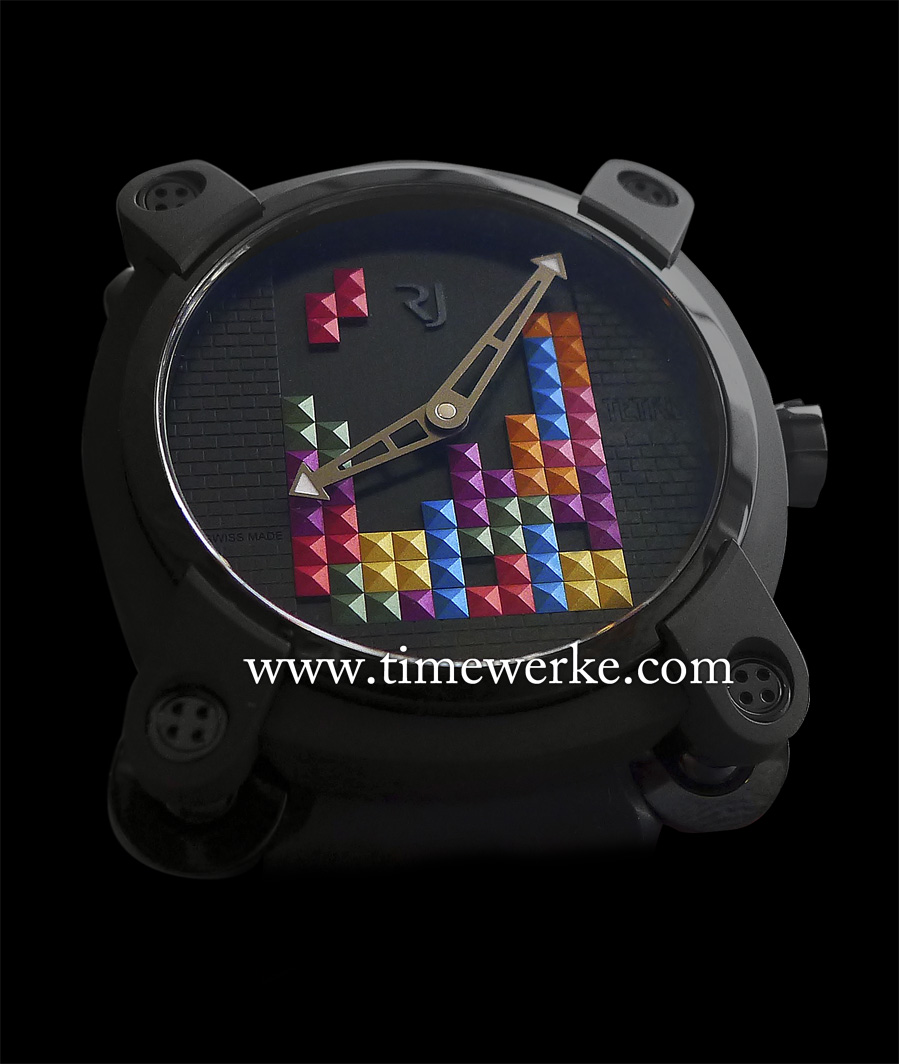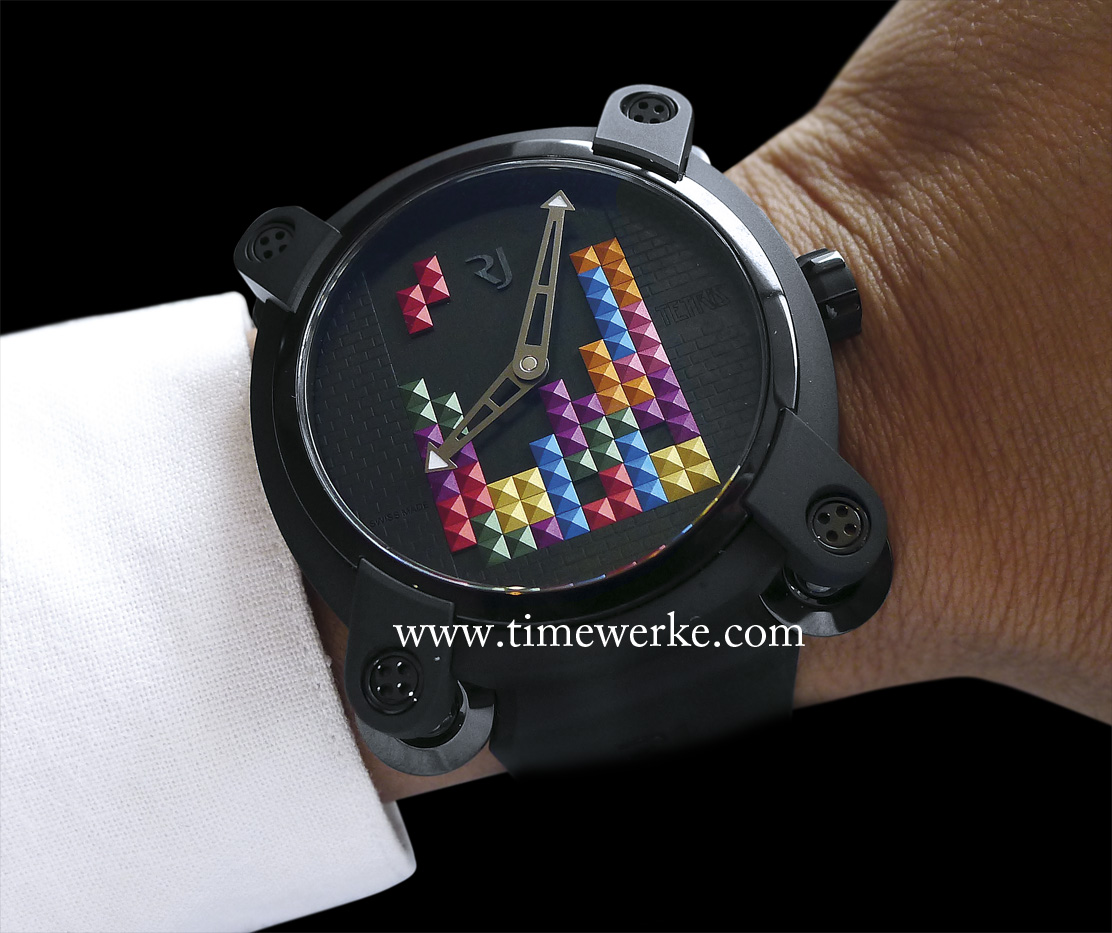
The RJ-Romain-Jerome Tetris-DNA watch is a commemorative piece that celebrates the 30th anniversary of the first release of the Tetris game in 1984 (1984 to 2014). Launched in mid 2015, the matrix dial features aluminium “Tetriminos” – “Clous de Paris” tiles pyramidal in shape. Limited to 84 pieces and priced at CHF15,555 / EUR17,500 / US$18,950. Photo: © TANG Portfolio. Elfa / Timmy 2015
Mention Tetris and for those familiar with the game, the images of falling blocks instantly come to mind, not to mention the haunting tune that is associated with it.
The Tetris game was developed by Russian computer engineer and video game designer Alexey Pajitnov in 1984.
The objective of the game is to manoeuvre the continuous flow of falling blocks of different shapes (called Tetriminos) to form a complete horizontal line such that it (the line) can be eliminated from the screen or playing field, allowing play to continue and one to score points.
Failure to do so would mean a blockage (pun most definitely intended) of Tetriminos on screen with less playing space for manoeuvring these falling blocks to their desired positions (for line eliminations). It is game over once the blockage reaches the critical level.
The Tetris game will surely be familiar to those who had, back in those days, defined the Atari video game console as their “computer”.
For Manuel Emch, CEO of RJ-Romain Jerome, he recalls the hours of fun with this game on his first generation Game Boy.
This also explains why this game was chosen to be “immortalised” in a RJ-Romain Jerome watch – the Tetris-DNA, which is housed in the brand’s Moon Invader watchcase, under a collaboration with The Tetris Company, LLC.
On the dial, one will discover stacked and colourful “Tetriminos” as if the game was in session. The gaps in between the blocks point to an incomplete horizontal line.
The dial’s matrix playing field is hand-brushed and each “Tetrimino” is individually applied. Rather than being lacquered, the “Tetrimino” is anodized for colour consistency.
The aluminium “Tetrimino” is pyramid-shaped on the dial and what results is a visually appealing 3D-effect.
“If you want to have a qualitative product, you have to work on it qualitatively,” says Emch.

The case back has a grainy-textured stellar pattern and it has a Tetris medallion. This is the RJ-Romain Jerome Moon Invader case featuring ball-and-socket joints to allow for a more comfortable sit (or “landing” if you so wish to call it) on the wrist. Photo: © TANG Portfolio. Elfa / Timmy 2015
The RJ-Romain Jerome Tetris-DNA is actually a 30th anniversary commemorative piece as it celebrates the game’s first release in 1984. This would also explain why only 84 pieces are available.
Thanks to the Moon Invader case, sporting the 46mm Tetris-DNA on a small wrist is also comfortable.

The Moon Invader’s case is indeed comfortable even for small wrist sizes. The 46mm case is in black PVD-coated titanium. Look closely and at the 3’o clock position on the dial, you will see “Tetris”. Between 7 and 8 o’clock, “Swiss Made” is inscribed. Click on the image for a better view. Photo: © TANG Portfolio. Elfa / Timmy 2015
The Tetris game is indeed a classic. The “Tetris” name has even been “adopted” by scientists. Physicists have nicknamed a scientific device used for studying DNA the “single-molecule Tetris”.
With the RJ-Romain Jerome Tetris-DNA watch and scientists nicknaming their research tools “Tetris”, it sure does look like the Tetris game has just scored even more points and moved into extended play.


